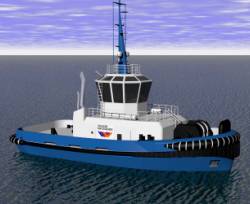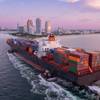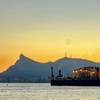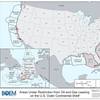Size Matters, At Least for Wind Farms
IJmuiden-based Offshore Ship Designers is to design a new compact but powerful AHT offshore support vessel for Netherlands-based Neptune Marine Service BV.
The order follows a recent contract for the design of two Azistern24/56 tugs for Singapore-based Pacific Offshore Engineering and Trading Pte. The key to both designs is that although the vessels will have the capabilities of much larger tugs and offshore support vessels, their smaller size reduces both capital outlay and on-going operational costs.
Michiel Wijsmuller, managing director of OSD, says, “Size certainly matters, especially when it is related to costs. What wind farm operators need is compact but versatile vessels, and the offshore sector needs vessels that are less expensive to operate but equally capable. The answer in both cases is to find a way to squeeze more out of a smaller platform, and that is what these two new designs will do.”
The Neptune contract is for the basic and detailed design of a 44 m AHT offshore support vessel which will be used for anchor handling, ocean towage and wind farm construction support duties. The 70 tonne BP vessel is designed for worldwide operation, high reliability and low maintenance costs. There is accommodation for 22 persons. Two main propellers with nozzles and three transverse thrusters will give the vessel DP-1 station keeping ability. The detailed design will be ready by October and the vessel is intended to enter service in the second half of 2012.
The Azistern24/56 vessels to be designed for POET are the first in a series of fuel efficient designs developed by OSD Holland. Based on a load line length of less than 24 m, the design range can be upgraded to 70 tonnes BP. The POET vessels will have a LOA of 25.85 m, beam 10.8 m and be powered by twin Cummins QSK-60 main engines and Rolls Royce azimuthing thrusters delivering 56 tonnes BP and a speed of 11.5 knots. The vessels will have a very high degree of maneuverability and be suitable for working in tight spots. Construction of the vessels will start at the end of May 2011, and delivery will be early 2012. Both vessels will be outfitted with class 1 fire-fighting equipment.















